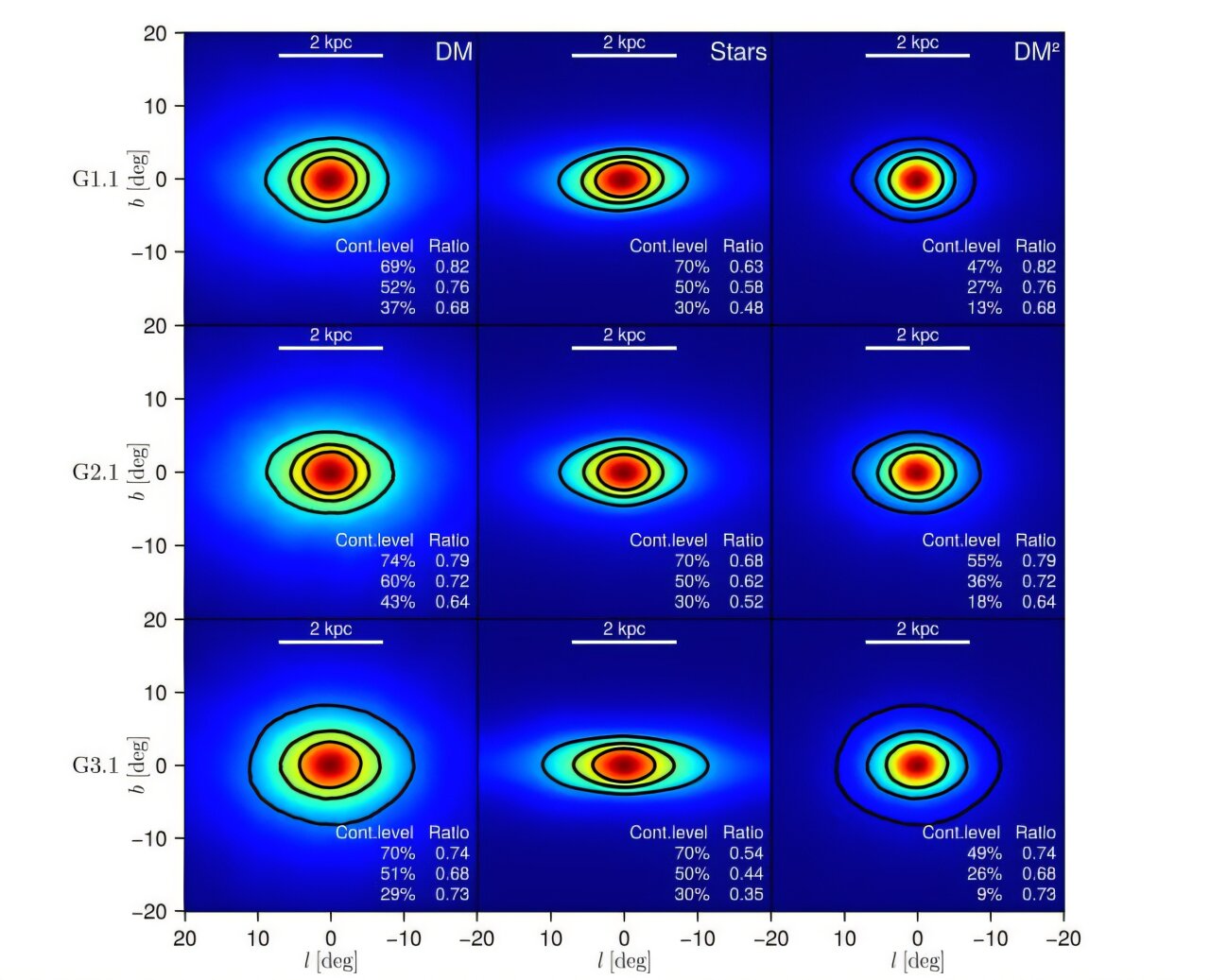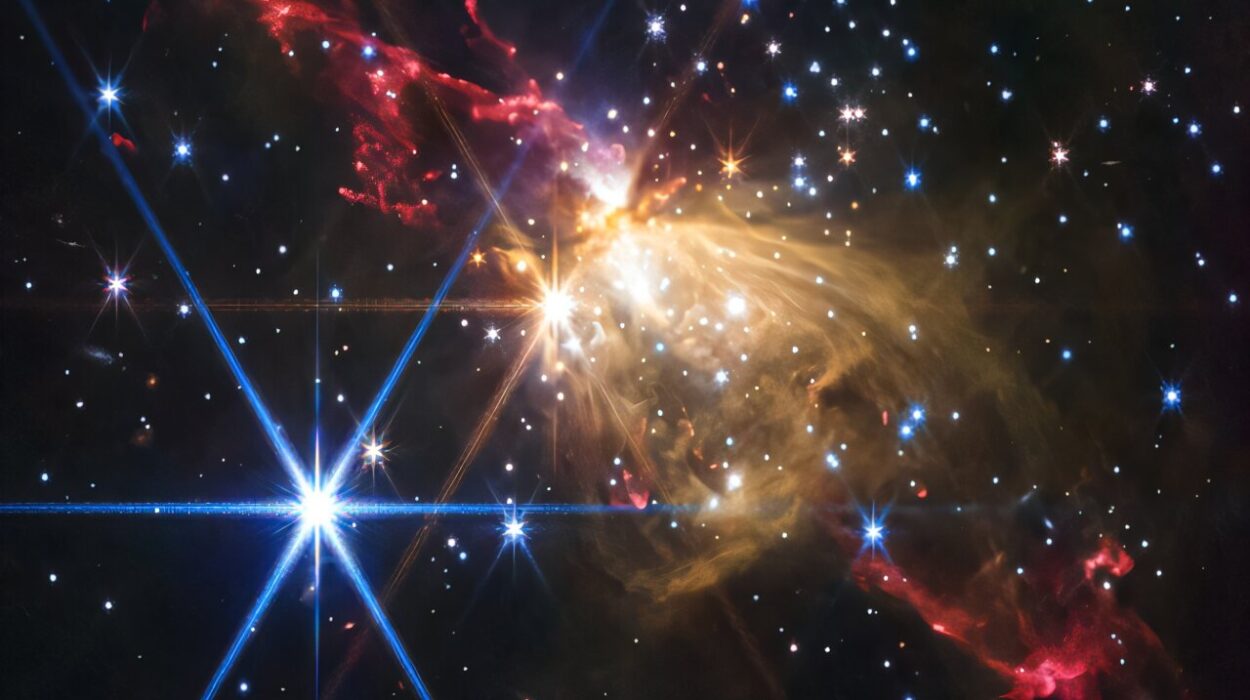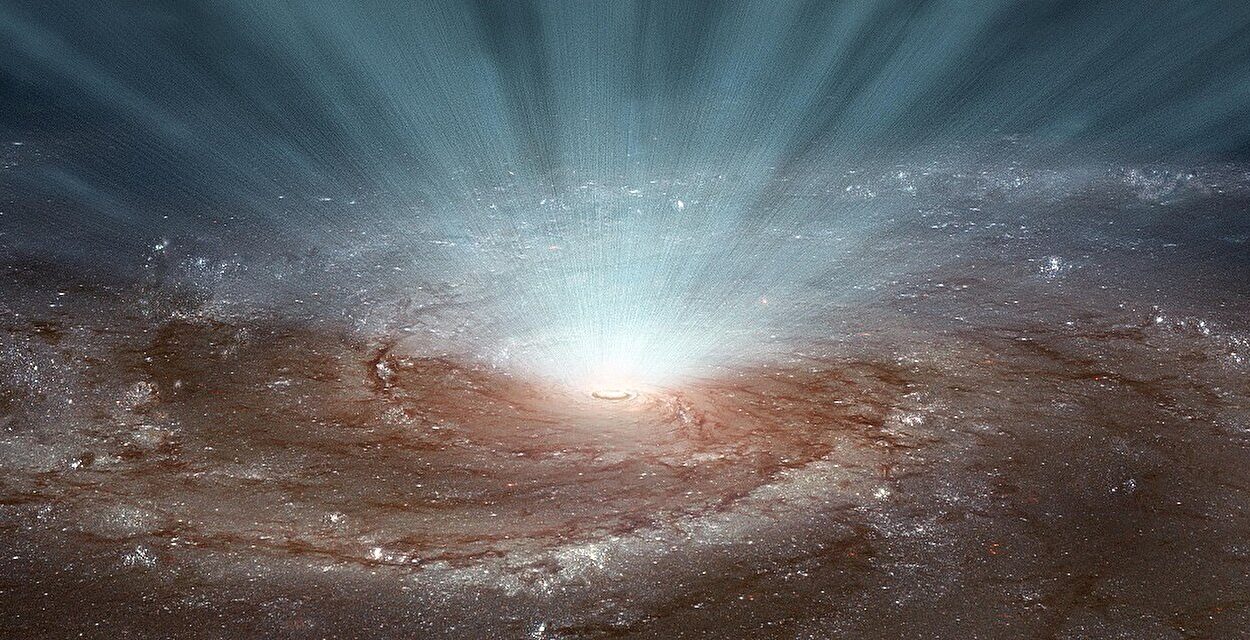For decades, astronomers have stared into the heart of our galaxy and seen something they cannot explain—a faint, glowing haze of gamma rays. It shines steadily from the Milky Way’s center, invisible to the human eye but unmistakable through powerful telescopes. This strange light has puzzled scientists for years, igniting one of the most profound mysteries in modern physics: is this glow the long-awaited signature of dark matter, or is it something far more ordinary, born from the violent spin of dying stars?
Now, a team of researchers from Johns Hopkins University and international collaborators has taken a significant step toward unraveling that mystery. In a study published in Physical Review Letters, they found that both leading explanations—the dark matter theory and the neutron star theory—remain equally plausible. Yet, the new findings may have nudged the cosmic scales slightly closer to one of the most tantalizing discoveries in human history: the first real evidence of dark matter.
The Hunt for the Invisible
Dark matter is one of science’s greatest enigmas. It neither emits nor reflects light, and yet it seems to account for most of the universe’s mass—an invisible framework that holds galaxies together. Without dark matter, galaxies like ours would simply fly apart under their own rotation. Physicists estimate that more than 80 percent of all matter in the universe is dark, unseen, and undetected.
“Dark matter dominates the universe and holds galaxies together,” said Joseph Silk, co-author of the study and professor of physics and astronomy at Johns Hopkins University. “It’s extremely consequential, and we’re desperately thinking all the time of ideas as to how we could detect it. Gamma rays, and specifically the excess light we’re observing at the center of our galaxy, could be our first clue.”
This excess gamma radiation, discovered over a decade ago by NASA’s Fermi Gamma-ray Space Telescope, appears as a diffuse, faint glow that can’t be fully explained by known cosmic sources. It’s as if something deep in the galaxy’s core is giving off a quiet, constant hum of energy.
Reimagining the Milky Way’s Past
To understand this mysterious glow, Silk and his international team took a bold new approach. Using advanced supercomputers, they simulated the formation of the Milky Way itself—not just as it is today, but as it evolved over billions of years.
The Milky Way, they found, wasn’t always the stable spiral we see now. In its youth, it was a chaotic, colliding mix of smaller galaxies, dust, and gas, gradually merging to form the massive system we inhabit today. During those early cosmic mergers, vast quantities of dark matter likely poured toward the galactic center, where they became densely concentrated.
If dark matter particles can collide with one another, as some theories suggest, then those ancient collisions could produce gamma rays—precisely the kind seen by the Fermi telescope.
The Simulation That Changed Everything
What makes this new study groundbreaking is how the team incorporated the galaxy’s history into their models for the first time. When they simulated dark matter clustering and collision rates during the Milky Way’s early years, the resulting maps of gamma ray emissions matched the real observations with uncanny accuracy.
In other words, when they accounted for how the galaxy actually grew, the data began to make sense. The simulated gamma ray glow, born from hypothetical dark matter collisions, aligned almost perfectly with what telescopes had already recorded.
These results complete what the researchers call a “triad of evidence”—a growing body of clues suggesting that the mysterious light could indeed be a whisper from the dark side of the universe. But even this isn’t proof. Science demands more than beautiful coincidences.
The Rival Theory: Dying Stars That Refuse to Fade
There is another explanation for the gamma ray glow—one that has long stood as dark matter’s most stubborn rival. It centers on a strange class of stellar remnants called millisecond pulsars.
When massive stars die, some collapse into neutron stars—dense, city-sized spheres of matter that rotate at incredible speeds. Some spin hundreds of times per second, releasing beams of gamma rays in rhythmic flashes. These millisecond pulsars can mimic the kind of glow we see in the galactic center.
If enough of them existed in that region, their collective light could easily account for the mysterious haze. However, there’s a catch: astronomers haven’t observed nearly enough millisecond pulsars to explain the brightness of the signal. To make the numbers work, there would have to be thousands more pulsars than we currently know of, hiding just beyond our telescopes’ reach.
That gap leaves the door wide open for the dark matter theory.
The Coming Era of Sharper Eyes
Fortunately, help is on the horizon. A new generation of instruments promises to provide the clarity that astronomers have been craving. The upcoming Cherenkov Telescope Array—an enormous gamma ray observatory under construction—will be able to detect high-energy signals with unprecedented precision.
With its sharper resolution, scientists will finally be able to test whether the Milky Way’s gamma rays are the high-energy fingerprints of spinning neutron stars or the lower-energy signatures of dark matter collisions.
“A clean signal would be a smoking gun, in my opinion,” said Silk. Such a finding would not only solve the decades-old puzzle of the Milky Way’s glow but also mark the first direct evidence that dark matter truly exists.
A Cosmic Detective Story
Until that data arrives, the Johns Hopkins team is not standing still. Their next step involves mapping where dark matter should exist in the smaller, faint dwarf galaxies orbiting the Milky Way. These galaxies are rich in dark matter and relatively free of other radiation sources, making them ideal natural laboratories.
If similar gamma ray patterns appear there, the dark matter explanation would grow far stronger. But if no matching light is found, the mystery will deepen even further.
“It’s possible we will see the new data and confirm one theory over the other,” Silk said. “Or maybe we’ll find nothing, in which case it’ll be an even greater mystery to resolve.”
That humility captures the spirit of science—especially in fields that stretch the limits of human knowledge. The universe often teases us with clues just clear enough to ignite hope but murky enough to demand patience.
The Shadow That Shapes the Cosmos
The search for dark matter is more than a quest for invisible particles—it’s a journey toward understanding what the universe is made of. Everything we can see, from the glow of distant galaxies to the atoms in our bodies, represents less than 5 percent of all that exists. The rest—dark matter and dark energy—is unseen, yet it sculpts the cosmos on every scale.
If the gamma rays at the Milky Way’s center are truly a beacon from dark matter collisions, it would be one of the most important discoveries in modern science. It would confirm that our galaxy—and every galaxy—is built upon a vast, hidden foundation of matter we can neither touch nor see, yet upon which all of creation depends.
A Universe Still Whispering Its Secrets
The Milky Way’s heart continues to glow, silent and steady, defying easy explanation. It is a reminder that the universe is far from fully known, that even in our cosmic backyard, great mysteries still pulse in the dark.
Whether that light comes from dying stars or from the invisible hand of dark matter, one truth remains: humanity is still learning how to see. Each telescope, each simulation, each fragment of data brings us a little closer to understanding the grand design that holds the stars together.
In that pursuit, the night sky ceases to be empty—it becomes a vast laboratory of wonder. And in the faint, persistent glow at the center of our galaxy, we may just be witnessing the universe whispering its most profound secret: that the darkness itself is alive with meaning.
More information: Fermi-LAT Galactic Center Excess morphology of dark matter in simulations of the Milky Way galaxy, Physical Review Letters (2025). [accepted].
Preprint on arXiv: Moorits Mihkel Muru et al, Fermi-LAT Galactic Center Excess morphology of dark matter in simulations of the Milky Way galaxy, arXiv (2025). DOI: 10.48550/arxiv.2508.06314






